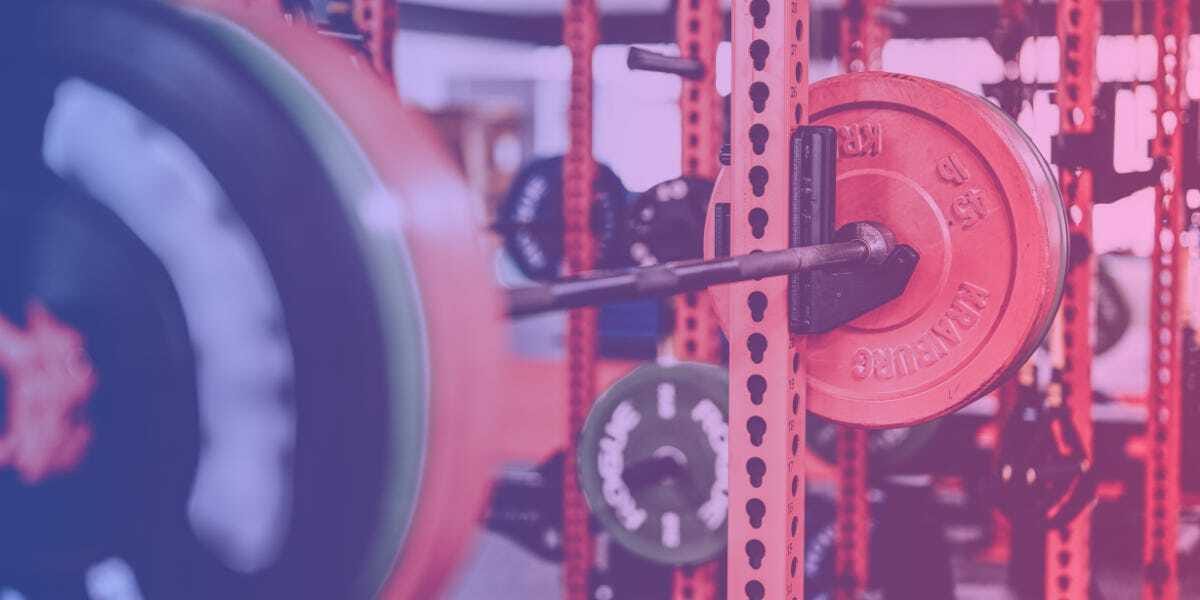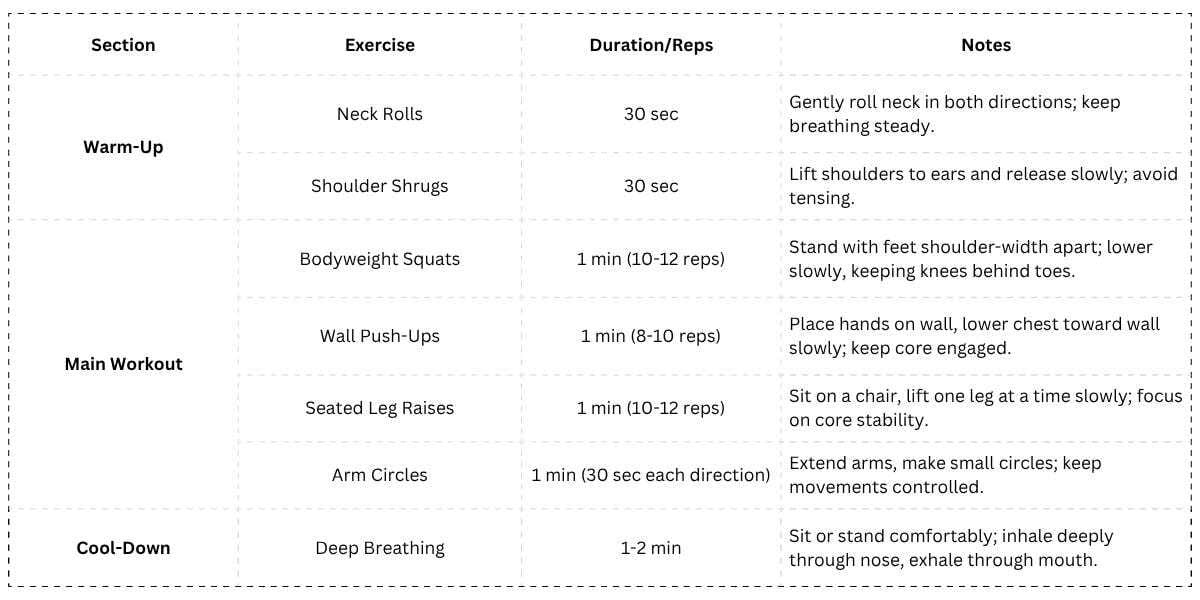We all experience panic attacks differently. In my case, as with many of you, I was most afraid that a panic attack would cause my heart to beat faster. This became one of my main concerns, to the extent that I developed controlling behaviour and monitored my heart rate multiple times a day to ensure it was always within a safe range. But how did I know what the 'safe range' was? Like many of you, I googled my symptoms. Good idea, huh? Not.
One of my biggest fears when experiencing panic attacks was my heart beating faster — alongside the constant fear of the next attack. This made me experience constant fear everywhere: at home, at work, on the street and, logically, at the gym.
My First Panic Attack at the Gym: When Exercising Felt Dangerous

Why? I suppose my definition changed. Initially, I associated the gym with health. However, as I became more stressed and obsessed with control, trying to control everything — sleep, oxygen levels and heart rate — my perception of safety changed, and that included the gym. I no longer linked it to health, but to danger.
So, how did this happen? I still remember that day. I was doing squats to train my legs when I started to focus on my racing heartbeat. Squats are a demanding compound movement that involves several muscles, so your heart has to pump more blood and therefore beats faster. However, as I had experienced my first panic attacks in recent weeks, I immediately started looking at my watch to try and control my heart rate. I did this after each set, which made me more and more stressed and eventually led to my first panic attack at the gym.
-Looking back, I realise that I could increase my heart rate almost on demand just by looking at my watch and focusing on it. I wonder what great things could be achieved with this kind of focus. Have you ever thought about it this way?Anyways, back to the topic. -
Regardless, this experience marked a turning point. With this first panic attack, my next gym sessions were filled with worry, fear, and more panic attacks. At first, I managed by taking longer pauses and reducing repetitions, but eventually, these episodes prevented me from going back to the gym. This lasted for about two whole months.
To provide more context about myself and how significant this disruption was: I love sports and have been active my entire life—playing football, basketball, going to the gym, running, you name it. This experience made me wonder: Will it stay like this? Will I ever be able to enjoy working out again without fear?
Of course, I did all this because I was trying to protect myself, to feel safe. But did it really work? Not really. It actually made things worse. By stopping going to the gym altogether, I reinforced the narrative I had convinced myself of: the gym was dangerous. My body literally feared the gym because I had now defined it as dangerous, and the behavior I chose only confirmed that. In reality, I did the best I could with the tools I had.
Thankfully, I wasn’t constantly afraid. There were moments of clarity and ease that enabled me to deal with the situation. It was during these moments that I realised I needed to take action, as I knew that sport was essential for good health — a necessity, not an option. I wanted to be able to do them again without feeling afraid. This realisation motivated me to look for answers and find solutions. I started researching everywhere online — websites, blogs, YouTube, forums — to find out what others were doing in similar situations. That’s when I discovered micro-workouts.
A Gradual Journey to Recovery

Going back to the gym cold turkey was, at that time, too overwhelming for me to handle. So, I thought, if I want to do sports but I’m afraid of returning fully to the gym, what if I break this big fear into manageable parts?
I started by asking myself: What is my biggest fear when I go to the gym and exercise? The answer was: that my heart would beat faster. Are there solutions that would allow me to work out at home, moving my body without significantly increasing my heart rate? Yes—yoga.
While yoga wasn’t lifting weights, it was movement, and it was a step toward doing something I wanted to return to. I stuck with it for a couple of weeks, starting with slow 15-minute sessions and eventually increasing to 30 minutes. I noticed that I started to feel safe doing yoga; I didn’t need to worry about my heart rate being too fast. This gave me the confidence to try something else, as I really missed lifting weights.
This progress led me to my next question: Is there a workout I could do from home that wouldn’t significantly increase my heart rate? The answer was: Yes, I had read about micro-workouts and remembered that they could be done anywhere without practically sweating. Now, you may ask, But what are micro-workouts? They are essentially a full-body workout you’d do at the gym (e.g., 60 minutes), broken into smaller sessions performed throughout the day. For instance, instead of a 60-minute gym session, a micro-workout might involve six different 10-minute sessions spread throughout the day. There are studies proving that they are as effective as gym workouts.
Why did this strategy work? Well, firstly, I had learned to feel safer again through yoga. Mentally, I found it easier to accept and manage an 8–10 minute workout. I thought, 'I managed 30-minute yoga sessions, so 8–10 minutes is no problem.' And indeed, I felt I was moving, not feeling my heart pound, and most importantly, DOING SOMETHING.
Like with yoga, I started with shorter micro-workouts, maybe 20 minutes spread across four 5-minute sessions. I built on that over time, progressing to 12-minute workouts four to five times a day, which matched the 60 minutes I used to spend at the gym. This gradual approach helped to rebuild my confidence and prepared me to face the gym again.
A Micro-Workout Routine to Rebuild Confidence
Back then, there was no AI to design workouts, though some were available on YouTube. However, none targeted gym anxiety specifically. Below is an example I created with AI that you can try , tailored for those rebuilding confidence after panic attacks.
5-7 Minute Full-Body Micro-Workout for Gym Anxiety
This 5-7 minute full-body micro-workout is designed to be gentle, effective, and calming, avoiding rapid heart rate increases while building strength and confidence. Perform it three times a week (e.g., Monday, Wednesday, Friday). Focus on slow, controlled movements and steady breathing (inhale through the nose, exhale through the mouth). No equipment is needed. If you feel discomfort, pause and resume when ready.

Back to the Gym: Rebuilding Confidence Step by Step

To get back into it, I started slowly. I committed to 20-minute workouts and considered anything beyond that a bonus. However, I made sure to complete the full workout. Over time, these grew into 30-minute and 45-minute sessions, and eventually hour-long ones. I was gradually exposing myself to the gym and building up from manageable levels. In doing so, I was reclaiming the control that I had given up to fear for so long.
Overcoming this gave me a sense of growth and expansion that I still feel today. Consistent small actions compound over time.
Today, I’m back in the gym, feeling grateful and enjoying my workouts more than ever. If I can do it, so can you! You've got this!
Tips to Manage Gym Anxiety and Build Confidence
Be kind to yourself.
Start small and build up.
Better don’t use a smartwatch, or if you do, deactivate the heart rate monitor (unless it doesn’t bother you)
Any workout is better than none. Five push-ups are better than zero.
Listen to your body. If panic arises, stop, let it pass, and resume.
Finish your workout. This signals to your body that it’s safe to exercise.
Journal and track your progress.
The process isn’t linear; if you fall, get back up and try again.
You are not alone.